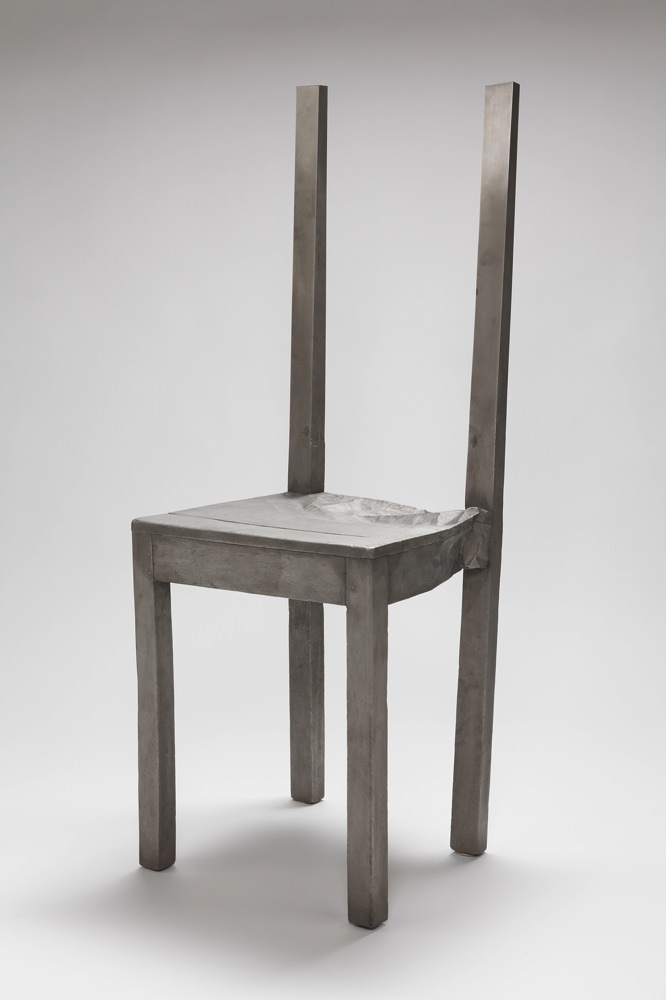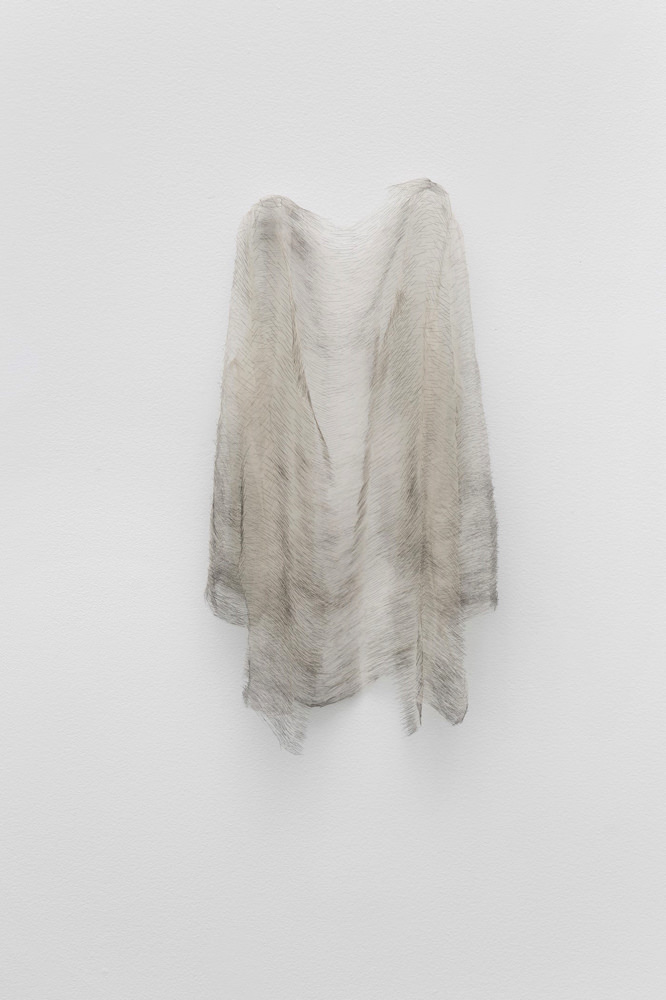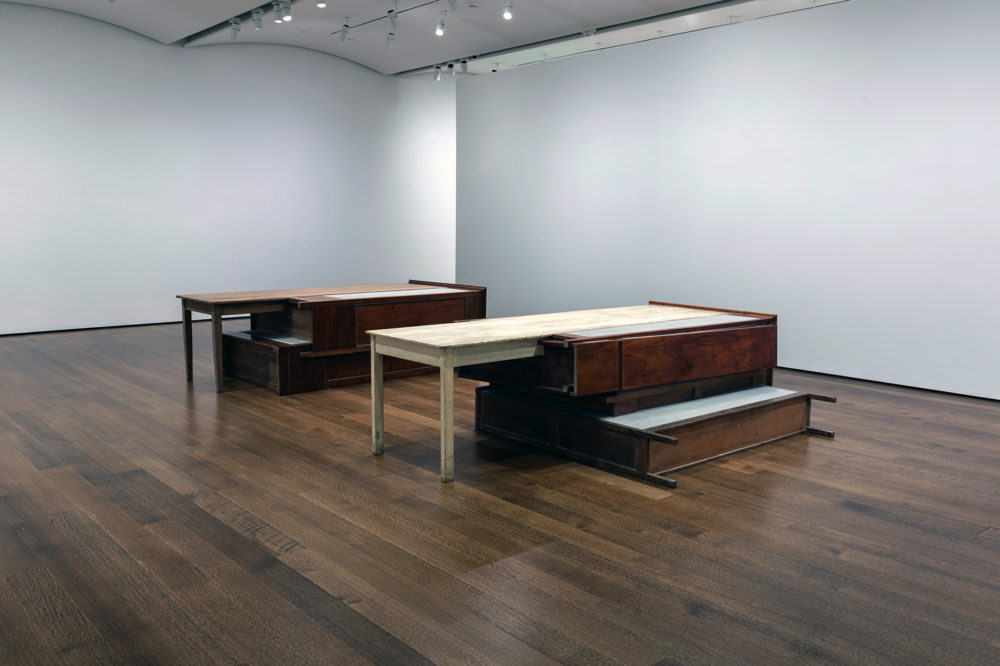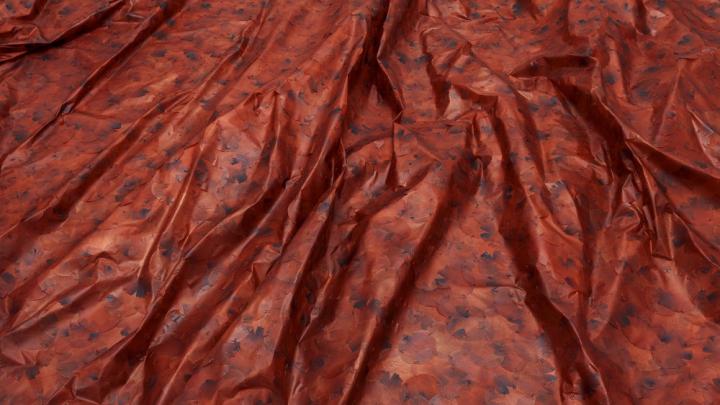Last month, Doris Salcedo returned to the Plaza de Bolívar in Bogotá, the center of Colombia’s public life and host to some of her most famous artistic interventions. For more than 50 years, the country had been embroiled in the world’s longest civil war, resulting in over 250,000 deaths, the displacement of five million people, and the “disappearances” of 100,000. (It’s suspected that many were anonymously buried in conflict zones or during botched kidnappings for ransom.) In the past, she’d dangled chairs from the rooftop of the Palace of Justice to commemorate the 1985 siege, and lit some 24,000 candles in remembrance of the 2002 murders of 11 government officials.
This time, she covered the plaza in white. Volunteers quilted together 2,350 cloth rectangles, each embossed in ash with the name of someone killed during the conflict. After 12 hours, the performance ended, and the shroud was gone. The work responded to the October 2 national referendum in which a narrow majority rejected a peace deal between the government and FARC (Revolutionary Armed Forces of Colombia), a leftist guerrilla movement. “It was the saddest moment of my life,” Salcedo said later. “I was afraid the possibility of having a better country slipped away from us.”
Meanwhile in Cambridge, the Harvard Art Museums prepared for the November 4 opening of “Doris Salcedo: The Materiality of Mourning.” The past two years have brought a surge of attention for Salcedo in the United States: she was the inaugural recipient of the Nasher Prize for contemporary sculpture, and had a major retrospective travel to the Museum of Contemporary Art in Chicago, the Guggenheim, and the Pérez Art Museum Miami. The Harvard exhibition, a spare survey in four parts, distinguishes itself by focusing on the last 15 years of her career. During this period, her work has seemed, literally, to soften. In stark contrast to the skeletal right angles of hospital beds, trolleys, and cribs in her early sculptures, Salcedo has taken up increasingly delicate materials—silk, grass, petals—and tested their limits.

Untitled, 2004-5
Courtesy of Harvard Art Museums; © President and Fellows of Harvard College
Though she primarily identifies as a sculptor, Salcedo’s work also has aspects of installation and performance art. She explained in a 2000 interview with curator Carlos Basualdo that she conceives of her works not as free-standing and self-contained objects, but as meeting points: a space shaped so that the viewer may enter into some greater knowledge. For a brief time, as a university student in Bogotá, she designed theatrical stage sets while training in painting and art history. She was keen to pursue sculpture, but began to make it in a studio setting only after enrolling in New York University’s master’s program. There, she studied the work of Eva Hesse, Marcel Duchamp, and especially Joseph Beuys, whose concept of “social sculpture” inspired in her “the possibility of giving form to society through art,” she told Basualdo. After graduation, her return to Colombia coincided with a wave of violence, and the rise of additional factions: narco-traffickers and right-wing paramilitary groups. A conversation ensued in the country’s art world, about pornomiseria—how the flood of graphic images in national media eroded public sensitivity to depictions of violence.
Salcedo’s work can be understood as a response to this representational challenge. She has described herself as a “secondary witness”: her process often includes extensive interviews with victims of violence or their bereaved families. Over time, she also addressed suffering and grief in other parts of the world. Recent projects engage with gun violence in Chicago and refugees' struggles in Europe. Her pieces have made use of doors and bedroom furniture, or leather shoes and folded shirts. These materials, bearing traces of past use, already felt suffused with meaning, and the resulting sculptures weren’t exactly abstract or figurative. They made absence concrete. Without imposing narrative detail from specific incidents, they gave form to the aftermath of tragedy.
The artistic notion of the “readymade” suggests providence and resourcefulness, an inspired sense of observation—the HAM exhibition emphasizes labor, technical expertise, and the will to make materials conform to an artistic vision. A hutch’s hidden armature keeps concrete from cracking with age; steel is crushed; petals are kept from decay with turpentine, glycerin, and collagen. The effect of these sculptures doesn’t emerge from previous human handling—the feet that wore this pair of shoes, the family that gathered around that table. They're objects without past lives, whose first and only function was to be art.
One long gallery contains some of the first works Salcedo created without the use of found materials. Modeled after a single wooden chair, the pieces in Thou-less (2001-02) were cast from heavy steel, then contorted and crumpled, and their surfaces hand-carved with cracks and wood grain patterning. Their chaotic arrangement, offering no intuitive path around them, suggests a domesticity that’s been permanently disordered. This feeling also prevails over the neighboring space, which reunites a pair of large untitled pieces from 2008 (now the property of a private collector and the Guggenheim in Bilbao). Earlier work in this vein—wooden furniture spliced together and filled with concrete—was embellished with embedded shreds of clothing or bone fragments. These works, though, are unsettlingly smooth, their angles unnatural and exact.

Disremembered II, 2014
Photograph by Patrizia Tocci; courtesy of the artist and Alexander and Bonin, New York, and White Cub, London
Farther back, the exhibit's corner rooms house softer, more emotive work. Two ghostly sculptures, Disremembered II (2014) and Disremembered VI (2015-16), nearly disappear against the walls where they’re hung: raw silk blouses threaded with thousands of blackened beading needles, created in response to gun violence in Chicago. Then there’s the exhibit’s centerpiece, and its one splash of color: A Flor de Piel (2013), a shroud of preserved red rose petals sewn for a Colombian nurse who had been tortured to death. (This incarnation of the piece includes additional floral sheets that make it 25 percent larger than previous versions, noted curator Mary Schneider Enriquez. Harvard recently acquired the piece, and with it, a first-aid kit with spare thread, chemicals, and the artist’s special instructions: each stitch must pass through three petals, and no stems can ever touch. )
In the exhibition space, the lights have been lowered according to Salcedo’s specifications: “There’s this hush,” Schneider Enriquez said, on a recent tour. Tall, temporary walls divide the gallery into sections, the openings between them somehow narrower than expected. This spatial arrangement is subtly unnerving; everything is slightly askew. With no obvious boundaries drawn around the sculptures, the installations allow and reward very close attention, yet the overall effect is alienating. The shroud-like sculptures are very nearly romantic, but their softly gleaming petals and protruding needles are also flesh-crawling. Touch doesn’t need to be forbidden—it’s almost forcefully repelled.

View of Untitled (2008) in “Doris Salcedo: The Materiality of Mourning,” on display November 4, 2016–April 9, 2017 at the Harvard Art Museums
Courtesy of Harvard Art Museums, © President and Fellows of Harvard College.
For Schneider Enriquez, who is also Houghton associate curator of modern and contemporary art, this exhibition has been five years in the making; her recently completed doctoral dissertation was the basis for its catalog. During the exhibition’s opening celebration on November 2, she moderated a packed discussion between Salcedo and Elaine Scarry, Cabot professor of aesthetics and the general theory of value. Artist and academic had obvious resonances between their work. Scarry likened A Flor de Piel to Rainer Maria Rilke’s poem comparing roses to eyelids; Salcedo replied that Scarry’s writing inspired the idea of representing the body in pain with fragile materials. Scarry commented that torture techniques often use household objects or are named after domestic rituals; Salcedo recalled speaking to the widowed in their homes, among the everyday possessions of the dead.
Their conversation, like the exhibit, emphasized craft. “You can never get at the immensity of what a piece of work is by tracking repetitive labor. And yet it’s that repetitive labor that transforms the world,” said Scarry. In Salcedo’s art, she continued, “You do see the beauty of repetitive labor. The works make visible the power of these small, repetitive acts—of suturing each rose petal, of putting the needles and the raw silk in the shirts. It’s out of these iterative acts that you have these collective outcomes.”
Salcedo agreed: “With each single needle that we add, we’re building memory,” she said. “We’re building meaning.”








